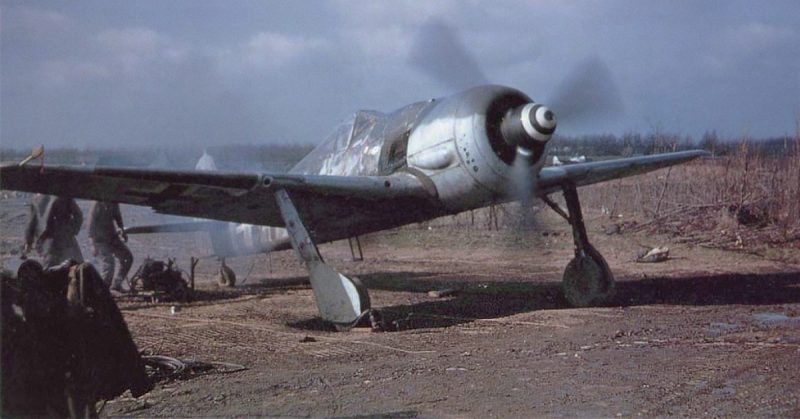Many consider the Focke-Wulf Fw190 to be the best Luftwaffe fighter plane of the Second World War. It was rightly one of the most famous and feared aircraft of the war.
Just in Time for War
The Fw190 was designed just as war was about to break out. The first flight by one of these fighters took place on the 1st of June 1939, three months before the German invasion of Poland triggered the war in Europe. It would go on to become a vital part of the Luftwaffe, Germany’s air force.
Entering the Fray
The Fw190 first appeared in combat in September 1941. Launched into the fighting in the skies above France, it provided a shock to the Allied airmen facing it.
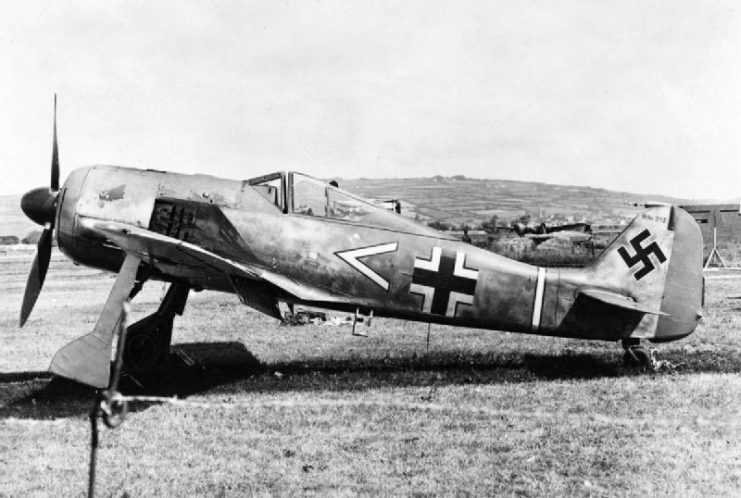
Challenging the Spitfire
The Royal Air Force (RAF) Spitfire V had dominated aerial combat since it first entered the fighting in February 1941. With its speed and maneuverability, it had become a menace that the Luftwaffe could not match.
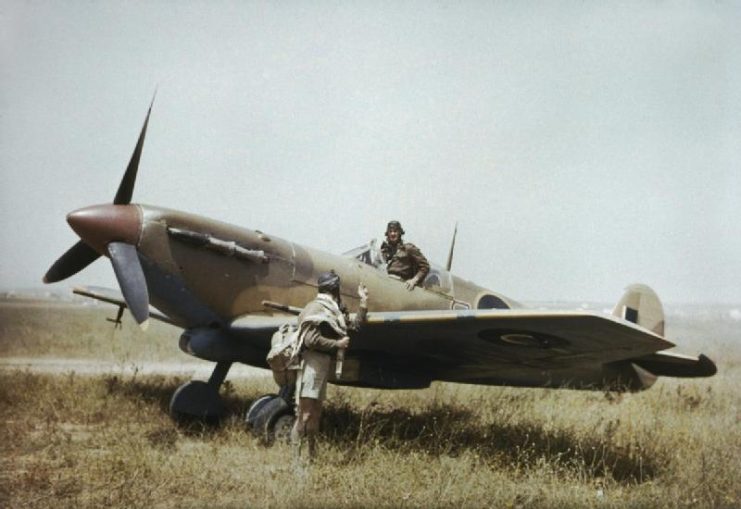
The arrival of the Fw190 turned things around. The Fw190 was faster than the Spitfire V and more maneuverable in every way except its turning circle. Fw190s shot down three Spitfires during their first appearance, transforming the dynamic of the air war. They continued to dominate until June 1942, when the Mark IX Spitfire arrived, once again tipping the balance in the RAF’s favor.
Radial Engine
Fighters of the era were powered by two types of engines – air-cooled radials and in-line engines. Radials were generally simpler, more reliable, and less vulnerable to overheating caused by battle damage. But they suffered from greater drag and struggled to reach the same power output as in-lines while being more likely to obstruct a pilot’s view.
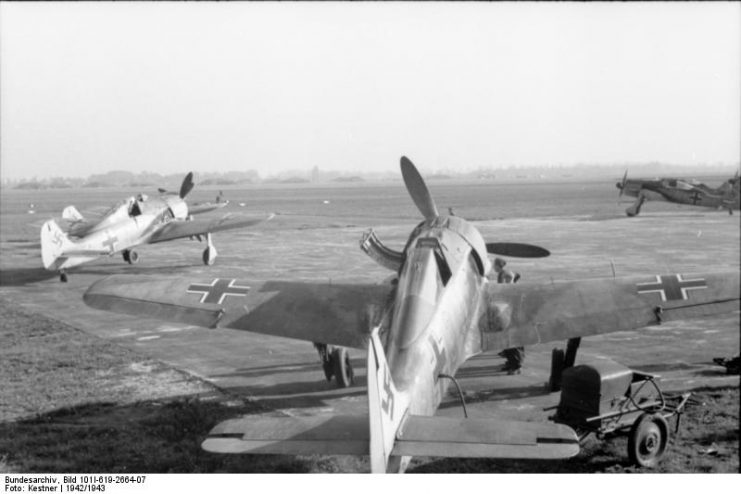
The Fw190 had an air-cooled radial engine. It proved that, in the right plane, such an engine could still outperform in-lines despite its drawbacks.
Arrival of the Model A
In February 1942, the second version of the Fw190 entered service – the Fw190A.
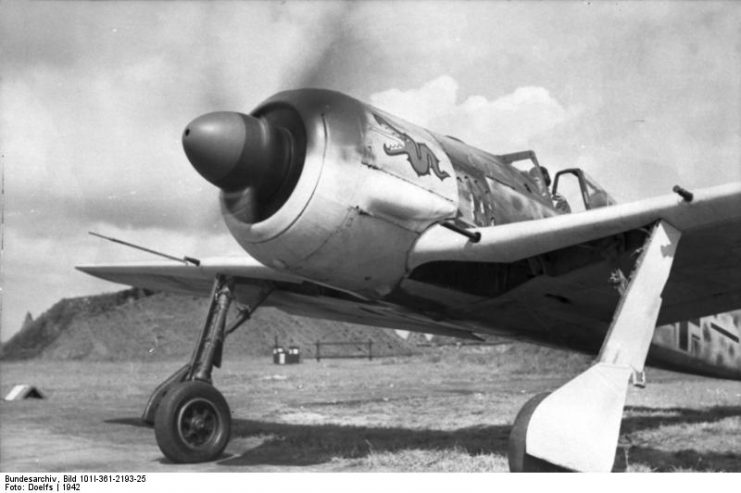
The Fw190A’s first task was the defense of a naval battlegroup retreating to German ports. The battlecruisers Scharnhorst and Gneisenau and the heavy cruiser Prince Eugen made a dash up the Channel, pursued by Britain’s Royal Navy and the RAF. Hundreds of bombers targeted the ships as Britain tried to destroy them.
Fw190As played an important part in the fighting. In one engagement, they destroyed a group of six Fairey Swordfish torpedo planes. The confrontation ended with the German ships returning to port, battered but still afloat.
Fighting at Dieppe
On the 19th of August 1942, the Allies launched a raid on the occupied French port of Dieppe. One of the purposes of this raid was to draw out the Luftwaffe based in northern France and do it significant damage.
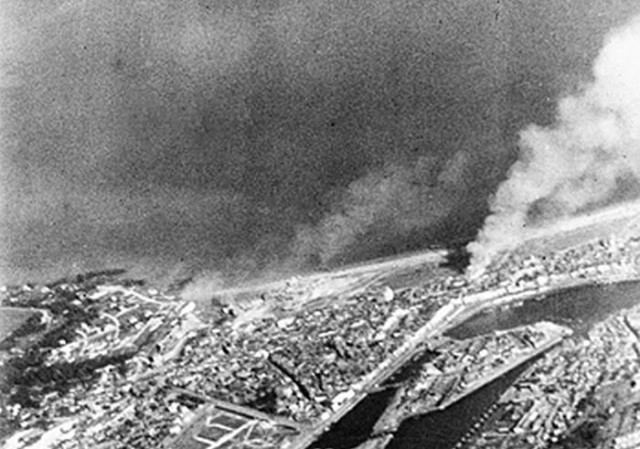
Fw190s played a major part in the aerial battle over Dieppe. Their performance ensured that the RAF didn’t get its victory. While the amphibious landings turned into a disaster, the fighting in the air became an indecisive confrontation with disputed results, despite huge Allied efforts.
Fw190 pilots claimed 97 kills that day.
Dozens of Variants
Many different versions of the Fw190 were produced – over 30 of the Fw190A alone. These varied from torpedo carriers to night fighters.
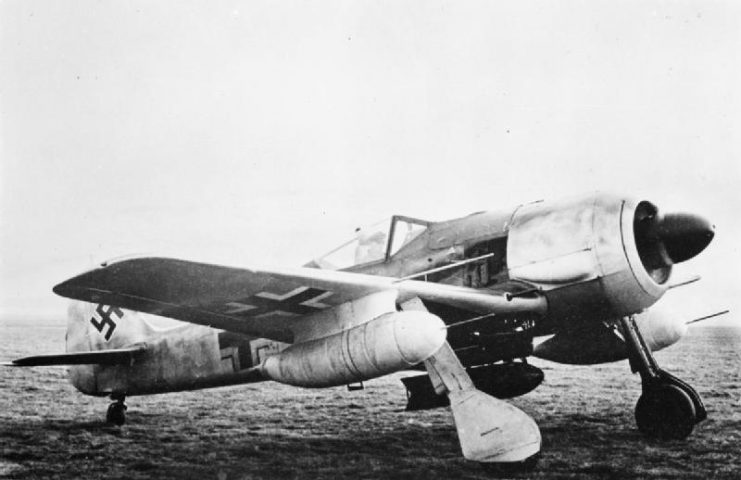
Home Defense
The Fw190 became the standard fighter defending Germany in the later years of the war. Some of these home defense fighters were fitted with rockets that could be used to inflict serious damage on defensive formations of enemy planes. This made them especially effective against the Allied bomber fleets.
One example of this took place on the 17th of August 1943. A force of over 300 Fw190As confronted a massive US bomber force. The Fw190As destroyed 60 bombers and damaged another 100.
Night Fighting
In June 1943, the Luftwaffe created a force of Fw190A night fighters. They weren’t fitted with radar, as the more advanced night fighters of the time were. Instead, they relied on attacking bombers as they reached their targets. There, the searchlights, flares, and fires on the ground would make the enemy visible even in the depths of night. The unit destroyed over 200 RAF heavy bombers in this way.
Giving the Game Away
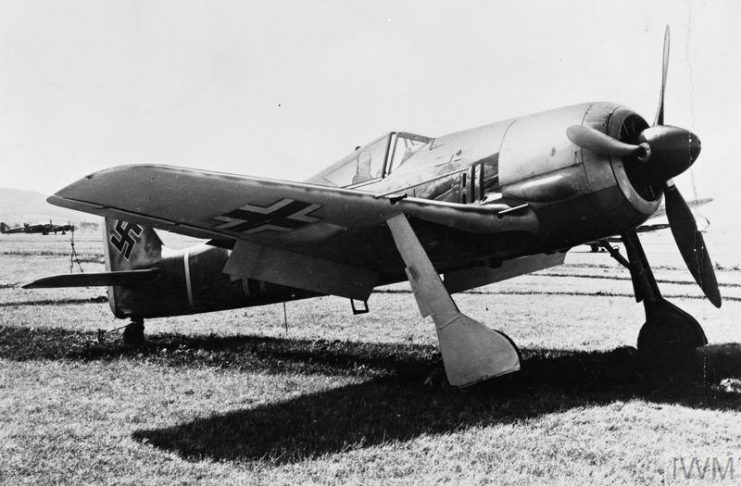
In June 1942, a Fw190A-3 accidentally landed in the United Kingdom. This allowed British scientists and engineers to examine the plane, telling them everything they needed to know about the plane and so to counter it.
D for Dora
During 1943, it became apparent that Germany faced a problem with high-altitude Allied bombers. Most current fighters weren’t up to the task of reaching and destroying these aircraft.
In response, Focke-Wulf developed a new version of the Fw190 – the Fw190D, known as Dora. This long-nosed plane was the first Fw190 to feature a liquid-cooled rather than an air-cooled engine.
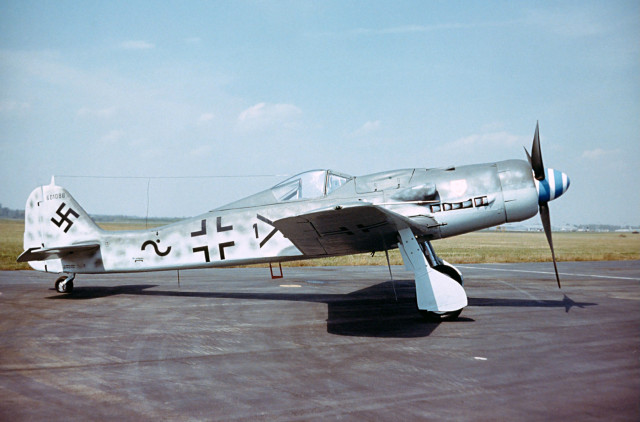
The Dora was an excellent interceptor that could match the Spitfire Mark XIV and reach heights well beyond the limits of the Fw190A.
Dora Goes to War
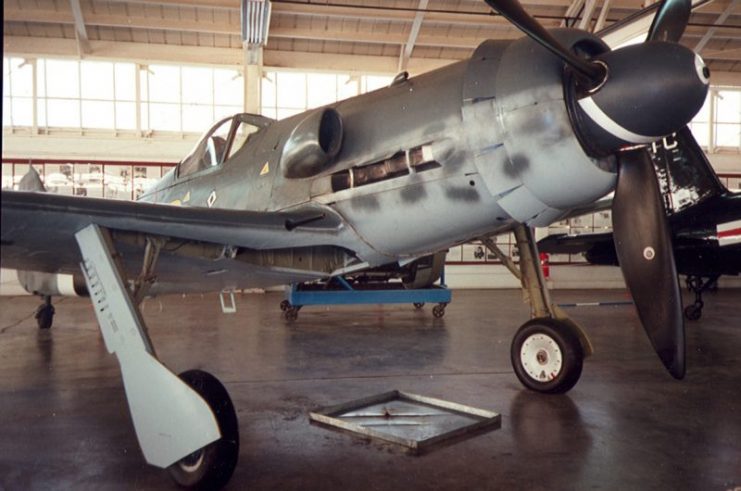
The Fw190D went into production in the summer of 1944 and the first models reached fighting units in August that year. 3/JG 54 became the first Luftwaffe group to convert to the Dora. Its first mission was providing cover for new jet fighters during their vulnerable take-off.
Diverse Weapons
The weaponry of a Fw190 varied with its role, but it was capable of packing quite a punch. The Fw190D, the first D model to enter the war, carried two 13mm machine guns, two 20mm cannons, and a 500kg bomb.
